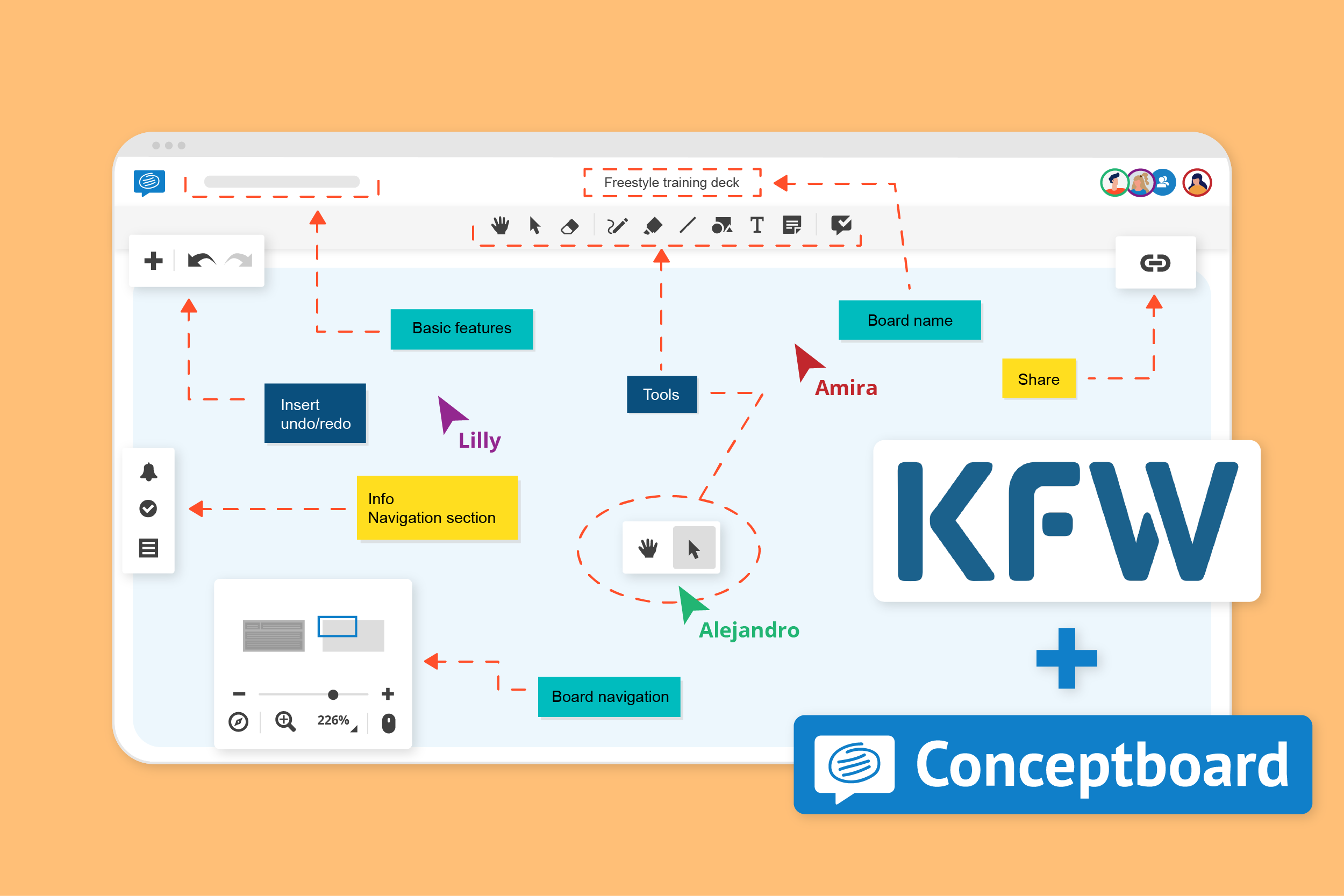This post is also available in: German
The KfW (Kreditanstalt für Wiederaufbau) is one of the world’s leading development banks. The introduction of a new tool can pose major challenges for an internationally operating company like KfW. The employees must be trained and an acceptance for the new tool has to be created. Kristian Schneider, design thinking and innovation coach at KfW, told us in an interview how this process can be designed in large companies.
The introduction of a new tool at KfW
At the end of 2020, KfW began introducing Conceptboard. The goal was to make everyday work easier for their employees and to promote digital collaboration.
As a coach, Kristian was part of the cross-professional cooperation that accompanied the introduction of Conceptboard. After their own intensive familiarization with Conceptboard with the help of our support materials, an interdisciplinary team developed concepts to quickly introduce employees to Conceptboard.
We asked ourselves: How can we introduce Conceptboard at KfW in such a way that as many people as possible can understand and use it quickly?
A beginner and advanced training was offered, as well as a weekly “question hour”.
The beginner training starts with an introduction to the basic functionalities. With simple exercises, even technically unaffiliated people become familiarized with the work and the possibilities in Conceptboard. The advanced training gives tips and tricks for creating boards and advanced functionalities.
In the initially weekly question hour, employees also had the opportunity to ask open questions and clarify problems quickly and easily. In addition, video material and a user guide for “self-learning” were created.
After a few months, the offer was largely discontinued, as the demand became less and less. Today, the training courses are only held on request, as colleagues are usually very good at helping each other and exchanging information on the possibilities offered by Conceptboard.
A lot of work has gone into creating the training courses so that as many employees as possible can use Conceptboard successfully and benefit from the new tool in their day-to-day work.
The international locations also became aware of the use of Conceptboard and got offered English trainings.
“I totally underestimated the impact of Conceptboard in our organization.”
From the beginning, the acceptance of Conceptboard was very high at KfW. Due to the intuitive user guidance in Conceptboard, the introduction to the new tool is usually completed quickly. It is the first collaboration tool to be used throughout the company.
The spectrum of areas of application is huge. Kristian himself uses Conceptboard in training sessions, synchronous and asynchronous retrospectives or design thinking workshops, among other things. He is also using Conceptboard for task organization to keep an overview of open To Dos.
For me, Conceptboard has replaced everything else.
“In collaborative work, Conceptboard is essential.”
The use of Conceptboard opens up many new possibilities for KfW that were not possible in a working from home environment. Workshops or meetings can be prepared asynchronously, which saves a lot of time. The follow-up of a workshop is also facilitated and the participants keep direct access to the developed contents.
Another time-saving feature is the ready-made templates for different work, analysis and business models, which many employees like to use.
Conceptboard also offers advantages in offline trainings. All content is stored directly. Thus, no content can get lost and can be retrieved at any time. This also eliminates the time-consuming creation of a photo protocol.
In addition, the use of digital post-its saves paper, which is good for the planet.

We are looking forward to accompanying KfW in their further steps with Conceptboard. If you want to discover more about how Conceptboard has empowered other organisations to boost productivity and efficiency, explore our customer success stories.





